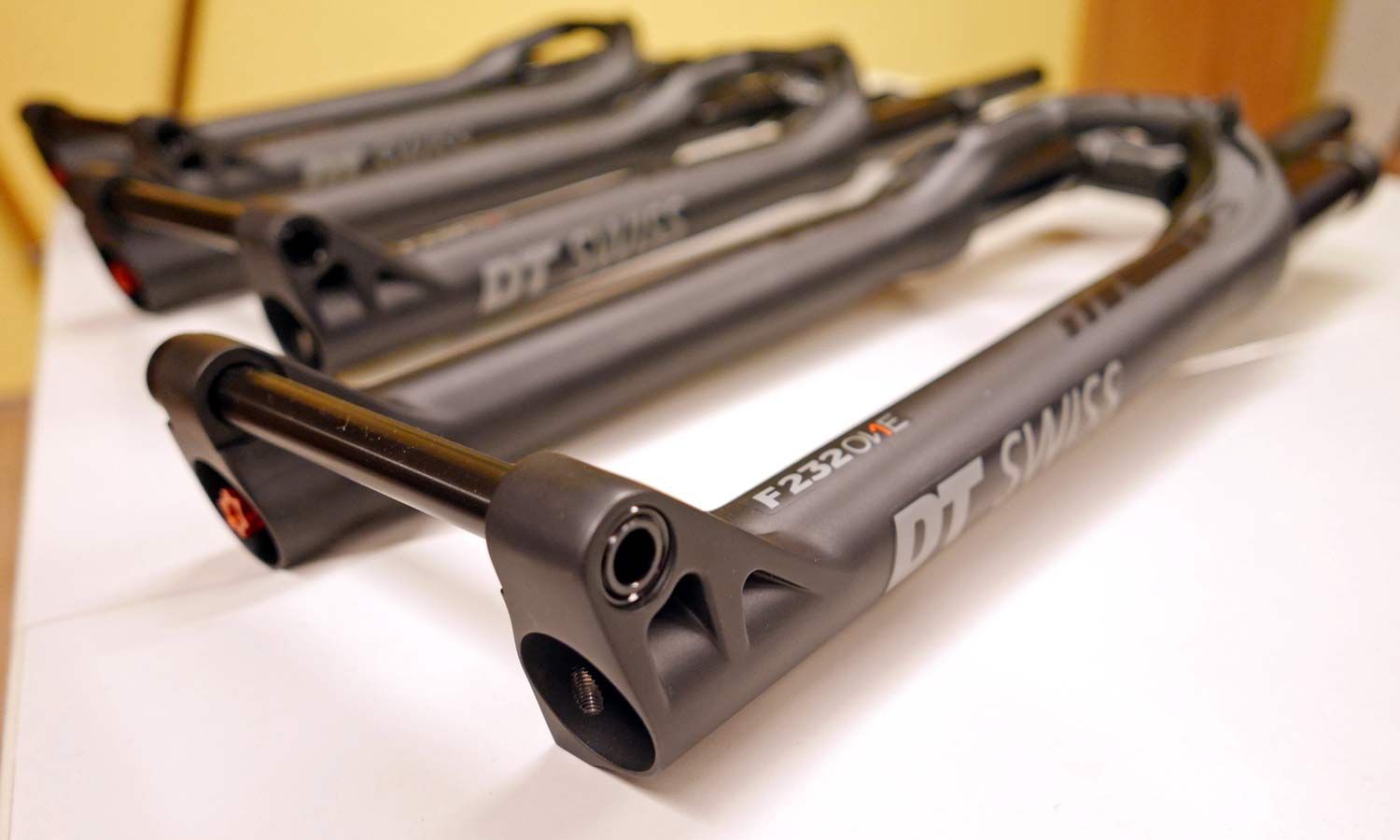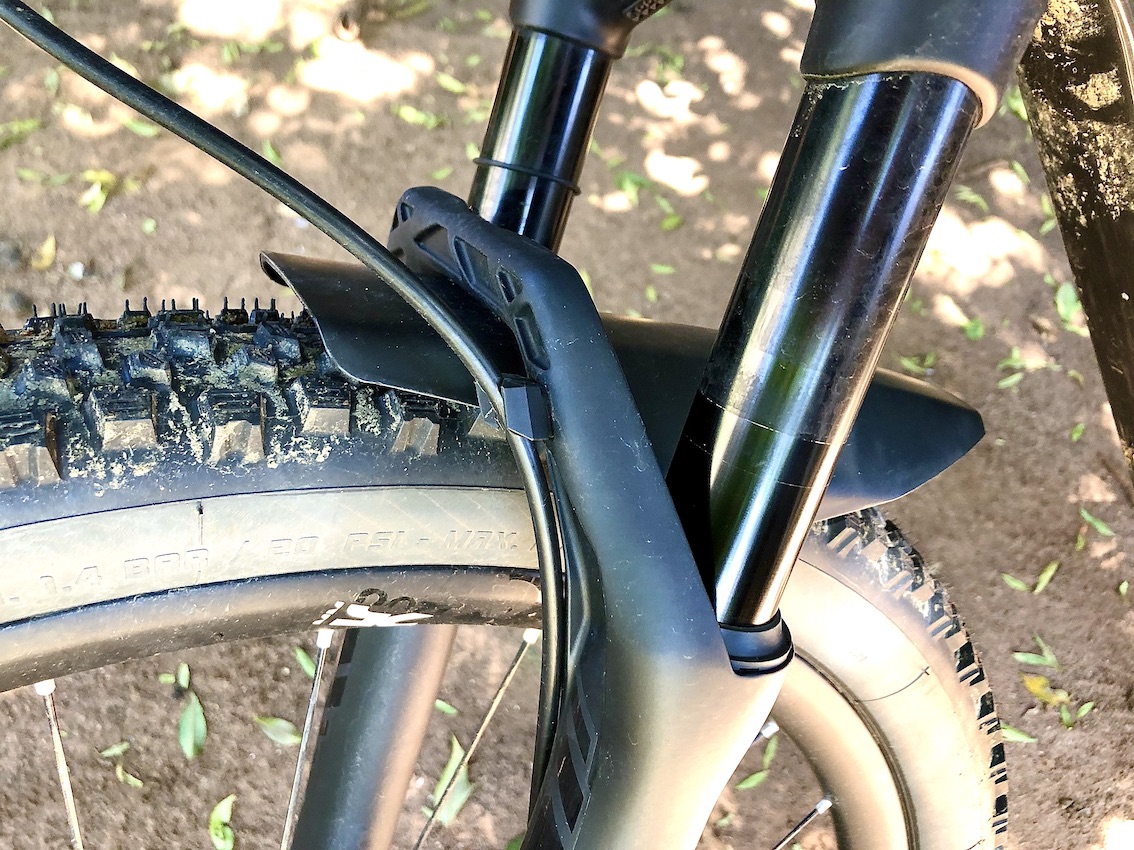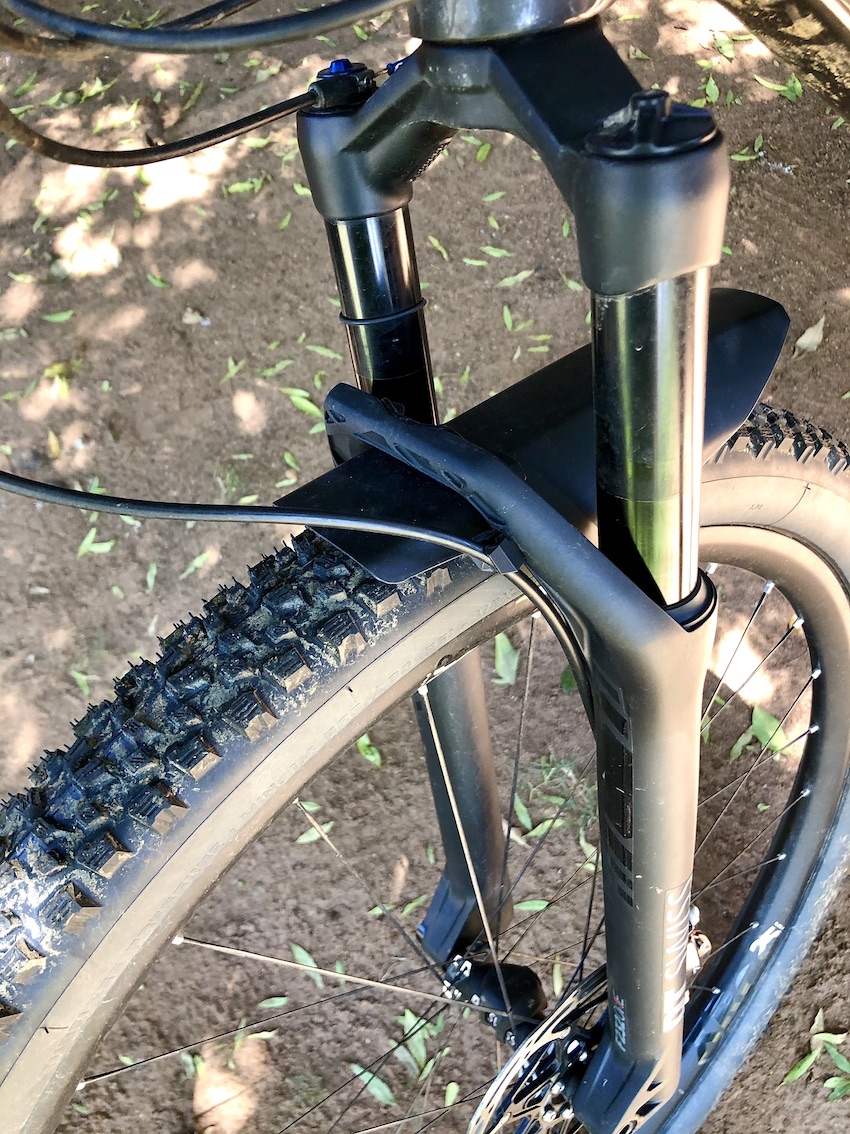The South African mountain bike market is a bit of an outlier when it comes to suspension forks. In most countries, upgrading a fork is fairly common. But in South Africa, it’s rare. But it doesn’t have to be. There’s nothing wrong with upgrading just your fork to improve the performance of your bike. We spent some time testing the new DT Swiss F232 One, should you be looking for some next-level performance.

When the DT Swiss F232 One arrived from RBC Online, the DT Swiss importer for South Africa, we were in the midst of test-riding a Norco Revolver FS 100, a R169 000 XC and marathon racing thoroughbred (full review here). http://www.treadmtb.co.za/tested-norco-revolver-fs-100-axs/ It came specced with the new Rock Shox Sid SL. So it was the ideal bike on which to mount DT Swiss’s flagship XC/Marathon fork.
The F232 One is a 29er-specific fork, which retains the 32mm stanchions of its predecessor. New is the design of the cast magnesium lowers, making it lighter and stiffer than its predecessor. At 1480g, it’s not the lightest fork on the market, but it’s not too far off its rivals (Rock Shox Sid SL 1328g; Fox 32 SC Factory Stepcast 1406g; Lefty Ocho Carbon 1446g).
Weight is one thing, but torsional stiffness is another very significant factor with forks. Torsional stiffness gives a fork a precise feeling for predictable handling. Appropriate torsional stiffness also ensures smooth, friction-free telescoping to allow supple travel and damping. DT Swiss says that the F232 One surpassed its competitors in their torsional stiffness tests.

The F232 One uses standard materials – aluminium tapered steerer and crown, alloy stanchions, and magnesium lowers. The fork design is asymmetric in that webs in the arch manage the asymmetric forces in the fork legs, with the damper in the one leg and the air spring in the other. It has a 51mm offset, which is the distance between the steering axis and the front axle, for those that may not know. The 51mm measure is fairly standard for 29-inch-wheel XCO forks. It uses a 110mm x 15mm Boost through axle that requires an Allen key to tighten and loosen. It’s also worth noting that it comes in a 120mm travel version too.
And then there’s InControl, DT Swiss’s name for its on-the-fly damping adjustment – a remotely operated system that changes your fork, with thumb-reach levers, from Open to Drive to Lock, essentially allowing more – or less oil – through to dampen as wanted.

There’s a lot of technical information relating to things with cool names such as Two-in-One Remote https://www.dtswiss.com/en/suspension/suspension-technology/two-in-one-remote-technology ; APT (Adaptable Progression Tune) https://www.dtswiss.com/en/suspension/suspension-technology/apt-technology ; Topology https://www.dtswiss.com/en/suspension/suspension-technology/topology-technology ; In-Control Fork Technology https://www.dtswiss.com/en/suspension/suspension-technology/incontrol-fork-technology ; and Linear Fork Technology https://www.dtswiss.com/en/suspension/suspension-technology/lineair-fork-technology. We’re not going to examine all this technology here because you really just want to know what we think of the fork, right?

The look
It comes in matt black, which basically goes well with any bike. We’re very partial to black forks actually. There’s also a nifty mudguard that comes with it. We rode it on a wet second stage of the Sani2c Race 2020 and got ridiculously muddy with no real evidence of any kind of mud protection. But that aside, it apparently also protects mud build-up at the fork seals, which makes sense. The lowers have been shaved in every possible place to trim unnecessary weight, leaving a super svelte silhouette.
The ride performance
On a high performance XC/Marathon bike you want to be thinking of line choices and managing your effort, not your fork’s performance – or lack thereof. It needs to do what it’s designed to do without you even noticing. And, once we’d set it up, that’s exactly what we experienced with the F232 One. The rebound is set via a dial at the bottom of the fork and the damping, which only affects the Open setting, via a Torx T10 at the centre of the compression lever.
We tackled a wide range of popular trails in Gauteng and KwaZulu-Natal and two events with DT Swiss’s pride and joy managing suspension duty up front. Most of the terrain was classic South African hardpack or loose over hard. A notable route was Day 1 of Sani2c Race (84km), which appeared to be more rutted than normal (December vs May dates), likely due to the rain, but which the F232 One handled with a pleasing smoothness. No hand/arm fatigue whatsoever in just under 5 hours of riding and a number of Strava segment PRs on the forest singletrack, which was rough-ish in places.
We also competed in a five-run Enduro – shortish runs with some rocks, rock gardens, stutter bumps and small jumps. Being held on a relatively tame-gradient slope (not much different to a XCO course), the bike and the fork were quite sufficient and outperformed all but six riders in a 150-strong field (our 50-year-old tester finished seventh).

What we really like is just how ergonomically designed the remote adjustment lever is. Definitely the most intuitive design we have ridden to date. Big enough to find with a searching thumb and grippy enough to ensure you don’t fumble your way to the required mode and separate enough to feel, which is which, without taking your focus from the trail. We completed more than 20 hours of high-effort riding on this fork and were pleased that the remote adjust system held it’s tension throughout that period, making mode shifts predictable and certain.
It costs R19500 to buy this fork. By no means an easy decision. However, it is more cost effective than a new bike and if you’re happy with your bike, but need some front-end performance improvement, it’s worth your consideration. If you’re faced with the prospect of buying a new bike that comes fitted with the DT Swiss F232 One, know that it’s comfortably belongs in the ‘best forks on the market’ category.
COST: R19 500
MORE INFO: Via RBC Online here.
More detailed information via DT Swiss here.


